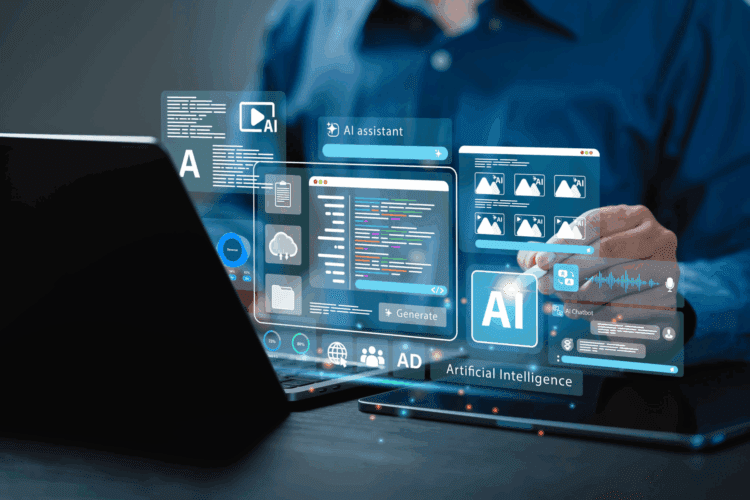So, you’ve explained the “why” and the basic scope of your company’s digital transformation, and reception seems positive overall. Congrats!
But to keep your workforce hanging on, it’s time to roll up your sleeves.
Digital transformation is a long-term initiative, and there’s no doubt that change is hard for anyone. You will need to assist your employees throughout the journey to retain their support, answer their questions, and provide them with the skills and knowledge they’ll need to feel confident and facilitate the changes you’ve implemented. Otherwise, they’ll feel left in the dust.
You need to invest in your employees for successful transformation. And it can’t be a one-time single-method deal.
Here are 5 investments you can make throughout your digital transformation to help your employees stay engaged:
5 Employee Engagement Tips to Help Your Workforce Keep Up with Digital Transformation
1. Consistent Communication
If an employee only hears about your digital transformation plans once, things aren’t going to end well:
Maybe your initial speech has them feeling uncertain, so the lack of follow-ups escalates that anxiety.
OR, perhaps they feel neutral or optimistic about your proposal, but without continued updates, they forget about the initiative entirely.
These employees are in for a rude awakening when the changes affect their roles. Who knows – they might end up resistant after initially supporting your plans.
To keep your staff’s support, you need to keep your initiative top of mind for them with regular updates. These updates are an excellent opportunity for you to show transparency by disclosing the ups and downs of each stage as it’s happening. By hearing the failures and successes, you can assure your employees that you’re not hiding anything from them, and it can prevent rumors from forming. It can even reaffirm to employees that failure isn’t something to fear. Rather, it’s par for the course when undergoing change and pursuing innovation.
Communication outlets could include:
- A weekly or bi-weekly email update from the CEO with either a video or written summary of the digital transformation’s progress, challenges, and successes.
- Town hall meetings where the leadership team provides updates on the digital transformation journey. For example, you could spotlight a new aspect of the project at each meeting, presented by the team who executed it, and offer a Q&A session at the end.
- Video interviews with project team members explaining their roles and achievements can help bring your transformation’s broader mission into context for employees.
- Internal newsletters dedicated specifically to digital transformation updates can be a fantastic option to meet the needs of employees who prefer to read vs. watch videos.
- Digital portals, a one-stop-shop for all things digital transformation, from documentation of the initiative’s roadmap and mission statement to regular updates and videos about progress.
2. Invest in Your Employee Experience
With a better employee experience, you can attract and retain high-quality talent and embrace more flexible working methods. The question of the employee experience has rocketed to the top of organizations’ priorities since the Great Resignation and amid the uptick of new and evolving roles. Even more, as Gen Z employees continue to grow, organizations are reckoning with how to welcome this demographic best while meeting the needs of other generations with significantly different career motivations and expectations.
To tackle these ambitions, many organizations are researching how employees move from one milestone to the next using journey maps, persona development, interviewing employees, and user research. These insights help uncover opportunities to improve the experience to fit employees’ needs, causing organizations to reconsider crucial aspects of onboarding, recruiting, development, and retention.
Another strategy that can improve the employee experience is choosing user-friendly technologies. When seeking new tools and platforms, look for ones that are intuitive and easy to use, reducing the learning curve.
3. Commit from the Top
In digital transformation, your leaders must first exemplify the traits and attitudes you want your workforce to exhibit. This buy-in across leadership will lead to consistent messaging across the organization.
But sometimes, after achieving a successful “executive buy-in pitch,” organizations don’t do sufficient work to prepare executives to truly model their digital transformation mission. This can often lead to surface-level understanding, which can fall flat with employees.
The executive team needs to know your transformation inside and out and wholeheartedly believe in it. To remedy this, many organizations take the time in the early stages of transformation to create a leadership development program. Doing so equips leaders with the knowledge, mindset, and behaviors they need to lead staff through change effectively.
These programs often focus on:
- A deep dive into the initiative’s “why.”
- A digital transformation roadmap to build solid buy-in and provide them with comprehensive knowledge to inform their departments throughout the transformation.
- The importance of experimentation, calculated risk-taking, and how to encourage it to spark innovation.
- Specifics into the changes and how they will affect each department and role. This insight will help leaders walk their departments through change and help them answer questions down the line, like “How will this affect me?”
4. Invest in Lifelong Learning
Since digital transformation is never truly over and technology is ever evolving, your company’s long-term success hinges on creating a culture where learning and doing are no longer separated. In practice, this means tackling the fear of mistakes by embracing innovation and long-term upskilling and reskilling. To ensure that your skill transformation program doesn’t fizzle out, try tactics like:
- Executive messages to communicate why upskilling is important and to congratulate staff on learning milestones
- Gamification, which brings some friendly competition into the mix to make the learning process more engaging. For example, employees could earn points for completing training modules.
- Incentives, which tie back to gamification, reward staff based on milestones or other markers to work toward.
This way, your employees won’t just be motivated to keep going, they’ll understand and buy into the vitality of lifelong learning. By building a solid upskilling and reskilling program, your company can ensure that its employees are consistently trained to acquire the necessary skills for the future of work. That’s a huge deal, too, as the tech skill gap makes hiring skilled employees complex and expensive, and high-demand skills evolve constantly.
5. Help Employees Embrace Agility
Technology and consumer demand move at lightning speed, and employees must be ready and empowered to match that pace. The best solution: Establish a set of tangible daily activities and behaviors that enable employees to act quickly. For example, you may introduce daily tasks using tools like reporting dashboards to offer real-time data. With these insights within their grasp, your staff can drive better decisions and feel greater ownership of the processes they oversee.
Additionally, multiple other strategies we’ve discussed so far in this article can help employees embrace agility:
- Cultivating a culture of continuous learning gives employees technical skills and soft skills like adaptability, creativity, and problem-solving, which are vital to agility.
- Clear communication from leadership is also essential, as understanding the purpose and direction helps employees align their efforts with your initiative’s goals. Finally, learning from failures is a fundamental aspect of fostering an agile mindset. As a result, leaders need to show support of experimentation and calculated risks so their employees feel comfortable doing so.
It’s a Make it or Break it Situation
Your employees’ support will make or break your digital transformation initiative, so it’s worth investing in these strategies to take them along for the ride. Digital transformation isn’t just about the shiny new tools we invest in. What’s just as important, if not more, is how an organization communicates with its staff and reskills them.
That’s what will play a truly invaluable role in initiative success.
Want More Content Like This?
Subscribe to the Naviant Blog. Each Thursday, we’ll send you a recap of our latest info-packed blog so you can be among the first to access the latest trends and expert tips on workflow, intelligent automation, the cloud, and more.






